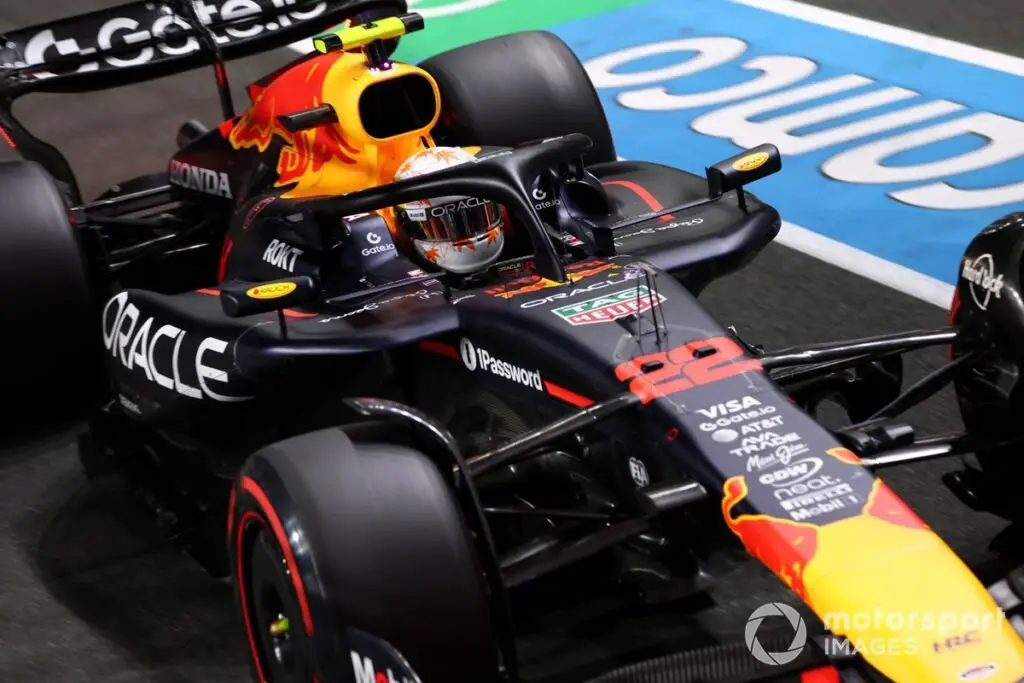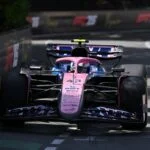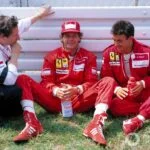Analyzing a Potential Race Strategy for Yuki Tsunoda
After the first-lap safety car at Formula 1’s Saudi Arabian Grand Prix, three drivers made a strategic gamble by switching their tires on lap one: Esteban Ocon, Gabriel Bortoleto, and Jack Doohan. All three started on the medium tire but aimed to go without making another stop if they could maintain the hard tire throughout the race.
The Impact of Early Tire Switch on Race Performance
Ocon, Bortoleto, and Doohan all attempted this strategy; however, it didn’t yield significant results for any of them. Although they gained positions during the pitstop crossover, they struggled to maintain their positions due to the tire disadvantage accrued by those who made their stops later. Ocon finished 14th, while Doohan used his fresher tires to pass Bortoleto for 18th towards the end.
Here’s a hypothetical scenario: what if Yuki Tsunoda, after recovering from his opening-lap collision with Pierre Gasly at Turn 4, had no damage and followed the same strategy as Ocon, Bortoleto, and Doohan? Could he have scored points by doing so?
Modeling a Hypothetical Race Strategy for Yuki Tsunoda
To map the hard-tyre degradation on an ideal race strategy, we’ll take a function of Ocon and Bortoleto’s laps to present the best case scenario. We’ll place Tsunoda at the tail end of the pack after the restart and start our count from the fourth lap.
Then we’ll work out a best-guess expected delta between Tsunoda and the mash-up of the Ocon/Bortoleto theoretical driver based on the previous races’ supertimes – Tsunoda at 100.838%, “Bortocon” at 101.932% – taking into account reduced pace running through the pack.
In Bortoleto’s traces, there are two points of note; between lap 21 and 27, he dropped time as he was being overtaken by the cars who had stopped; Ocon also lost time in this phase of the race, although not quite as much as Bortoleto did. We’ll not smooth those curves out too much, since this also accounts for areas where Tsunoda may start to come under attack from drivers on better tires.
To place Tsunoda at the back of the field, we’ll add in the time under the safety car to ensure he’s at the back of the pack, and assume he makes up the stoppage time while halted at Turn 4 to do so. Bortoleto was half a second off Ocon at the restart, so let’s make his gap over Tsunoda the same.
As per the other hard runners, Tsunoda thus takes a couple of laps to bring the tires in, clocking a 1m37.128s and a 1m35.791s on his opening two laps. He then gets into the 1m34s, lapping pretty consistently within the bracket (aside from a few 1m35s having contended with traffic) before getting into the high 1m33s by lap 33. This still puts him over a second a lap behind Verstappen, sporting new hard tyres, although he tails off back into the 1m34s in the final couple of laps as the degradation sets in.
Adding his race lap data to the time spent under the safety car, per our maths, brings Tsunoda to an eighth-place finish, having crossed the line at 1h21m50.586s, in the pocket ahead of Carlos Sainz and Alex Albon – and about five seconds behind Lewis Hamilton.
In all likelihood, this is a very optimistic forecast, even if the degradation that Ocon and Bortoleto faced through the race is naturally included within the calculations of Tsunoda’s race laps. But it does show that, had Tsunoda not sustained terminal damage, there was a chance for him to make up the places and wring a points finish out of the hard tires if he didn’t get completely swamped amid the traffic. Aiming for the 25-second gap between Hamilton and Sainz at the end, even with some greater variance in lap times, would likely have been achievable.
It’s not a strategy that would have, for a car at the top, upgraded a points finish into a better one. But it certainly would have helped one of them out of a jam had they come to blows on the opening lap and needed a hail Mary to get something out of the race.







